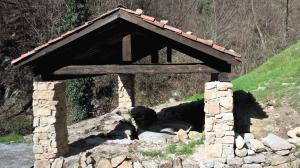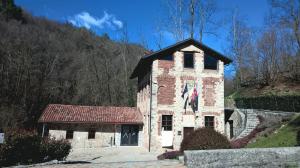
It looks like a complex set of buildings connected to each other in the past, they were built in different periods starting as early as the 1600s, subsequently revised and expanded periodically to changing production requirements.
There are two oldest buildings, which represent the original core: of them there are now only remains. The first, the largest, was built on two levels: a ground floor - where they spent the milling business itself - and a second level to accommodate different activities of service.

In the second building, considerably smaller, took place the pounding of hemp, an activity that was approached to mill grains as widespread and valleys typical of Biella.
The two processes had an advantage because, taking place in neighboring buildings could exploit the driving force of the same water wheel which were connected.
Towards the beginning of the 900 commercial activity, extremely started, the system made obsolete by now centuries old: the activity of the "crushes", was increasingly slowed the decline in the cultivation of hemp.
Pulled up next to the old system as well, but at a higher level, a new construction for the use that was made shall be placed midway between proto-industry and industry itself.

The mill Susta of Soprana is one of the few witnesses in the history of hydraulic "Mortigliengo", its history begins in 1627 and joined the Canton Above the Mortigliengo.
For about two centuries, the "mill for pounding hemp" was the property of the Parish of Soprana to be then sold in the mid-nineteenth century, to Angelo for Susta were to use them as a business tool.
He was then designed according to the canons of construction (albeit small) of the multi-storey factories of the 800 start 900, the presence of a propeller shaft, with its pulleys, undoubtedly served to transfer the motion to the machinery, later, when in 1940 the 'activity ceased, was sold to the company Giletti.
The restoration project was born from the donation to the City of Soprana in 1996 by the Family Giletti, its insertion into the circuit Biella Museums of Eco affirms the desire to preserve and put into operation, a testament to the culture of our country.

